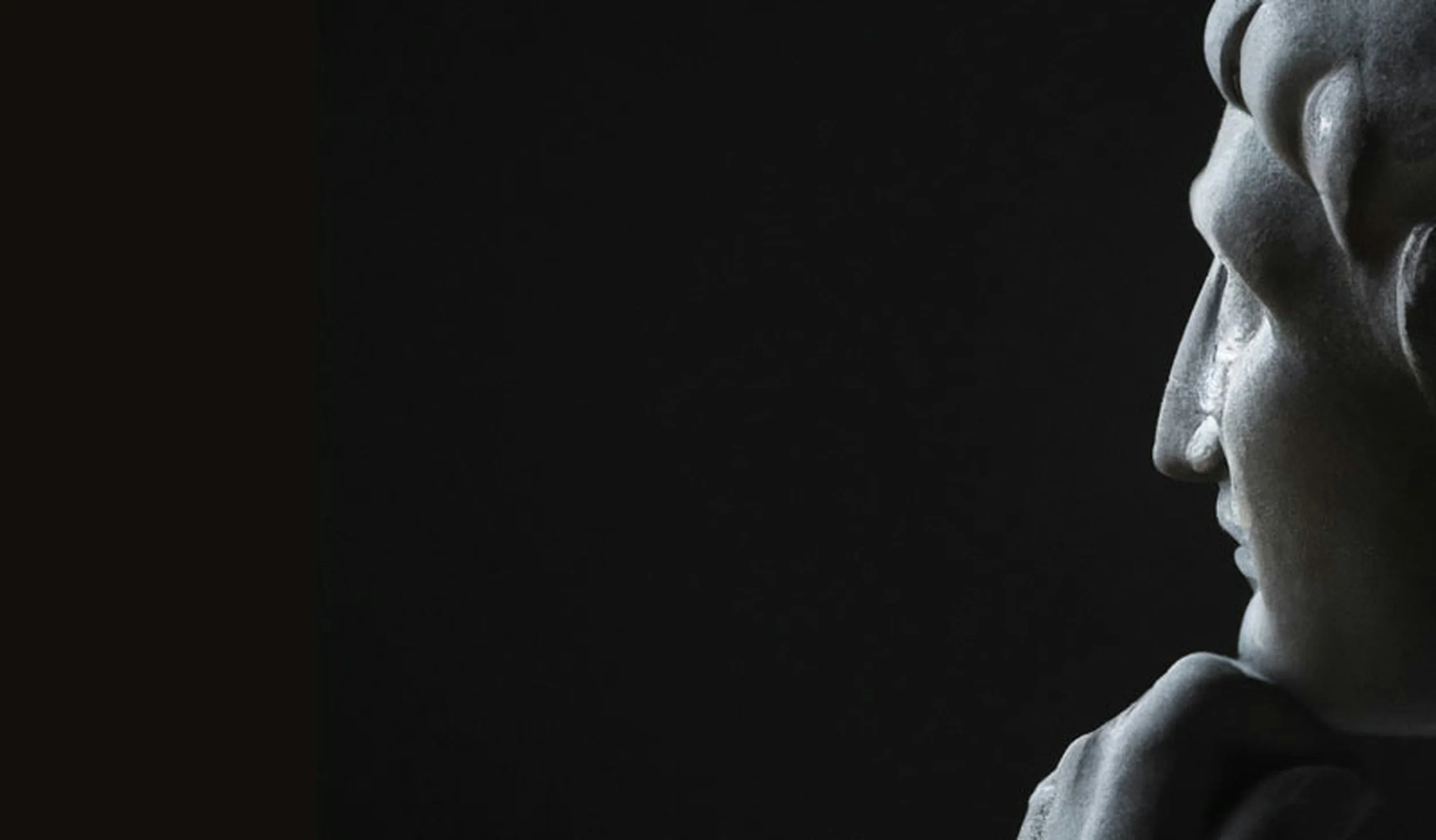The Hard Work of Thinking: A Couple of Puzzles in Philosophy
The Importance of the Paradoxes
We usually believe we have a clear and precise understanding of the concepts we commonly use. And, most of the time, we are right. However, on some occasions we realize we have misunderstood something. This has happened quite frequently in modern analytic philosophy. Philosophers have often been confident that their theories were rigorous and well-supported. But over time, it became clear that they were wrong, as paradoxes had slipped into their favored theories.
Paradoxes are problematic for any intellectual pursuit. A paradox occurs when a conclusion contradicts one of the principles at the basis of a theory. More precisely, there is a paradox when a theory contains one statement (let’s call it A), either because it has been derived by the premises or simply because its truth has been assumed, but the conclusion suggests the opposite (not-A). This signals that something went wrong, and we did not recognize it.
We will see two cases where philosophers encountered similar challenges and adjusted their thinking to resolve the issue. The first case involves the concept of “set”, which is crucial in the philosophy of mathematics. The second deals with the notion of “property”, a concept often discussed in metaphysics, namely the reflection on the general features of reality, and philosophy of language, that is the inquiry in how language works.
While most of us are not philosophers, I hope the examples I will present will prove useful in two respects. They may inspire readers to be open-minded and flexible when tackling problems that require thoughtful reflection in their everyday life. Furthermore, I aim to show that these are not mere speculations, but have tangible outcomes in the advancement of human knowledge and its applications.
The Iterative Conception of Set
Suppose we are in a small classroom containing only four students: Beth, John, Cindy and Tim. The teacher wants to divide these students in two sets. She can opt for a random division, simply taking, say, the set containing Beth and John and then the set which has Cindy and Tim as members, or the set that has Tim as a unique member and the other containing Beth, John and Cindy and so on.
However, usually we are not interested in forming sets in this way. We may need to follow specific criteria. For example, the teacher may need to form sets based on specific features of her students, such as having passed a test or not. In this way, the classroom will be divided in two sets: the set containing the students who passed the test and the set containing the students who have not. When modern set theory started being developed at the end of the 19th century, philosophers and mathematicians reasoned pretty much in the way just described. They thought that any condition could determine a set, namely the collection containing all the objects satisfying that condition. According to this idea, the condition of being wise determines the set of wise persons, the condition of being an even number determines the set of even numbers and so on.
However, Bertrand Russell showed that set theory based on this apparently innocent idea is contradictory. Russell’s paradox goes this way. Consider the set determined by the following special condition: being the set of all sets which are not members of themselves. Call this set R. Note that the existence of R is a direct consequence of the way of thinking about sets we briefly described. Indeed, if any condition “gives birth” to a set, then the condition of being the set of all sets which are not members of themselves should also generate a set.
Now, ask yourself: is R a member of itself or not? Unfortunately, trying to answer this question leads to a contradiction. Indeed, if you suppose it is a member of itself, then R, sticking with its definition, must not contain itself. On the other hand, suppose R is not a member of itself. It follows that it satisfies its defining condition, namely of not being a member of itself. So, it must contain itself after all. Hence, R should be a member of R if and only if R is not a member of R. Contradiction!
According to many philosophers and mathematicians, the concept “set” is arguably one of the most important building blocks of mathematics. Having a contradiction as its base would be a disaster. For this reason, after Russell formulated the paradox bearing his name, many thinkers had to rebuild set theory to make sure it was consistent. They dealt with Russell’s paradox arguing that the set of all sets that do not contain themselves does not exist. But how is it possible that there are so many sets, while there is no such a thing as Russell’s set?
The most popular answer comes from the iterative conception of set, holding that sets are constructed in stages. In this view, the universe of sets is not “flat”, as it were if all sets were given once and for all, but it has the shape of the so-called cumulative hierarchy. We start at the initial stage with some given objects, which may be either the empty set (that is, the set with no members), which is essential to define the number 0, or a bunch of non-sets (for example, our Beth, John, Cindy and Tim). We then start constructing new sets exclusively out of what we have using some well-suited operations. New sets are then formed from old ones by collecting sets formed at previous stages. As a consequence, Russell’s set does not exist in the cumulative hierarchy, because it cannot be constructed by previously available sets.
Summing up, with the challenge offered by Russell’s paradox, philosophers and mathematicians were forced to completely rethink the intuitive way in which we theorize about sets. The brand-new set theory that came up from this enterprise has been used since then and has proved to be reliable and powerful in many branches of mathematics. Now we are going to see that a similar problem arises in metaphysics and philosophy of language.
Properties and The Theory of Types
Since ancient times, philosophers have been engaged in the task of providing precise definitions of concepts deemed significant by humans. Perhaps the most well-known example is Socrates, who was famous for engaging in discussions with the experts of his era about virtue, goodness, and justice. In the contemporary philosophical literature, the definitions Socrates looked for are typically understood as inquiries into properties, the sorts of abstract entities expressed by predicates of a given language. For instance, the predicate “is wise” points to the property of wisdom, whereas “is pious” points to the property of piety. This association is also true for equivalent grammatical forms like “to be wise,” “to be pious,” “being wise,” and “being pious”. Moreover, properties are those things that can be satisfied. For example, “being wise” is satisfied by, say, Socrates only when Socrates is wise, while “being a cat” is satisfied by Felix only if Felix is a cat.
Most importantly, when philosophers claim that, for instance, to be wise is to be pious, they are exploring the nature of wisdom or what one should do in order to be wise. Thus, developing a robust theory of properties and, in particular, of its logic is of considerable importance in philosophy. Regrettably, this endeavor is challenged by an argument reminiscent of Russell’s paradox. Let’s see how.
Recall that we assumed that any predicate expresses a property, and that properties are those things that stand in a relation of satisfaction with objects. But, intuitively, properties themselves satisfy some properties. For example, we all think that being wise is good. So, reasonably wisdom satisfies the property of being good. If this is true, then, we may think that also the predicate “is a property” denotes a property (the property of being a property) and that this property is, trivially, satisfied by all properties (since every property is indeed a property).
So far so good. But then, consider the property expressed by the predicate “is a property that does not satisfy itself”. This is a predicate in English, so it expresses a property. Let’s call it the Russell’s property. But at this point, we could ask whether Russell’s property satisfies itself or not. Suppose it does. Then, it is a property that does not satisfy itself. Hence, from the assumption that it satisfies itself, it follows that it does not. Assume the opposite instead. But, if it does not satisfy itself, then it does what this property was supposed to do after all: satisfying itself. Thus, Russell’s property satisfies itself if and only if it does not satisfy itself, which leads us again to a contradiction.
A tentative solution of this puzzle consists in applying the same strategy mathematicians came up with in the context of set theory: there is no such a thing as Russell’s property. But this claim is more difficult to justify than the ban on Russell’s set. After all, “is a property which does not satisfy itself” seems to be a grammatically well-formed expression in English. So, as predicates like “is tall” or “is married” legitimately refer to the corresponding properties, according to our assumption, then why should the same not hold also for “is a property that does not satisfy itself”?
For this reason, the aforementioned strategy requires a substantial tweak: Russell’s property actually does exist, but it cannot be applied to itself. In order to justify this position, we have to take a step back and make some considerations coming from the literature of philosophy of language. All proper names, like “Socrates” “Plato” etc., refer to individuals, namely entities to which predicates can be meaningfully applied to form sentences. For example, “is wise” applies to Plato to form “Plato is wise”. However, if you try to apply “is wise” to “is wise” you get something not well-formed, namely “is wise is wise”. In other words, not all predicates can be applied to other predicates. Thus, there are some hidden constraints we did not recognize when we formulated our naive theory of properties.
The most well-known environment to precisely spell out such constraints is type theory, which was originally proposed by Russell himself. The basic idea is that, when doing metaphysics or similar theoretical inquiries, natural languages, like English, should be turned into formal languages. A language is formal roughly when expressions are divided in enclosed grammatical categories, each having its own class of things to which it can be meaningfully applied. Such categories are called types. Any violation of type-assignment is simply a categorical mistake. This has the effect of stratifying language in multiple layers associated with corresponding distinctions in reality: at the bottom level we have the type of individuals, then the type of properties that can only be applied to individuals, followed by the type of properties that can only be applied to properties applicable to individuals, and so on. What it is crucial to understand is that a property of a certain type never applies to objects of the same or higher type, and so it never applies to itself. That is why “is wise” cannot be applied to “is wise”, but exclusively to individuals. Thus, since it is just meaningless to ask whether Russell’s property applies to itself or not, no contradiction follows.
Type theory provides a robust and precise framework for understanding how natural languages work and having a deeper grasp of metaphysical concepts. However, it has applications that extend beyond the realm of philosophy, since it lies at the heart of the development of artificial languages, which are crucial for computer science and for the construction of AI systems.
Echoes in Everyday Life
Our exploration of the conundrums presented by set theory and properties reinforces the idea that philosophical inquiry is not merely an abstract exercise. These discussions guide us through the intricate realms of logic, metaphysics and language, revealing the pitfalls of intuitive reasoning and the paradoxes lurking within.
By grappling with Russell’s paradox and its kin, we discovered the necessity of rigor in our conceptual frameworks. The iterative conception of sets and type theory emerge as elegant resolutions to these philosophical challenges, attesting to the dynamic nature of philosophical thought and its practical applications. Indeed, the implications of these philosophical endeavors go far beyond the confines of academia, influencing mathematics, programming, and the development of artificial intelligence. These insights echo through our daily lives, shaping the tools we use and the way in which we comprehend the world, showing the profound impact of philosophy on human knowledge and its applications.
Suggestions for Further Reading
Bacon, A. (2024). A Philosophical Introduction to Higher-order Logics. Taylor & Francis.
Barton, N. (2024). Iterative Conceptions of Set. Cambridge University Press.
Boolos, G. (1971). The Iterative Conception of Set. The Journal of Philosophy, 68(8), 215-231.
Frege, G., Geach, P. T., & Black, M. (1951). On Concept and Object. Mind, 60(238), 168-180.
Irvine, A.D. & Deutsch, H. (2016), Russell’s Paradox, in E.N. Zalta (ed.) The Stanford Encyclopedia of Philosophy. Stanford University.
Russell, B. (ed.) (1940). The Philosophy of Logical Atomism. Routledge.




